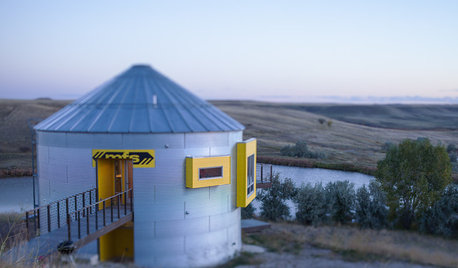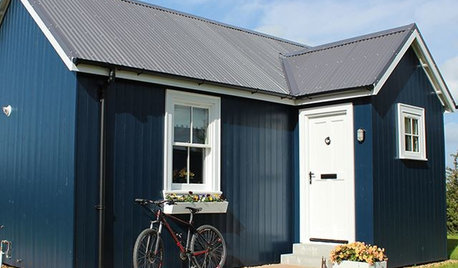small scale grain growing
sallymole
21 years ago
Related Stories

DECORATING GUIDESLarge-Scale Pieces Give Small Rooms Massive Style
Work bigger elements into a diminutive space and watch its design cred grow by leaps and bounds
Full Story
HOUZZ TOURSHouzz Tour: Prairie Grain Bin Turned Bucolic Retirement Home
An agrarian structure and a big dream combine in this one-of-a-kind home that celebrates 250 acres of Montana grasslands
Full Story
GARDENING AND LANDSCAPINGGrow a Lush Privacy Screen
No need to wait forever for patio privacy the green way. These 10 ideas will get your screening up and running in no time
Full Story
DECORATING GUIDESHow to Use Full-Scale Decor to Make a Small Space Feel Bigger
With a less-is-more approach, even oversize furnishings can help a compact area seem roomier
Full Story
SMALL HOMESHouzz Tour: A Wee Home Grows in a Scottish Garden
This compact house became a prototype with grand designs: showing that affordable and efficient can actually be stylish
Full Story
DECORATING GUIDESDownsizing Help: Color and Scale Ideas for Comfy Compact Spaces
White walls and bitsy furniture aren’t your only options for tight spaces. Let’s revisit some decorating ‘rules’
Full Story
HOUZZ TOURSMy Houzz: A Growing Family Embraces a ’70s Rental
A creative duo put their stamp on a ’70s apartment and settle in for the long haul
Full Story
INDUSTRIAL STYLEHouzz Tour: Going Against the Grain in a Missouri Silo
See how a creative couple turned a metal grain bin into a most unusual container for living
Full Story
BUDGET DECORATING13 Versatile Furniture Pieces That Grow With You
Build a collection of high-quality pieces that will work from that first solo rental to a long-term home
Full Story
EDIBLE GARDENSSummer Crops: How to Grow Watermelons
You might not need as much space as you think to get this summer mainstay to spring up in your garden
Full Story





pnbrown
hengal
Related Professionals
Comstock Park Landscape Architects & Landscape Designers · Saint Louis Park Landscape Architects & Landscape Designers · Harvey Landscape Architects & Landscape Designers · Burlington Landscape Contractors · Surprise Landscape Contractors · Barrington Landscape Contractors · Newberg Landscape Contractors · Salem Landscape Contractors · Santa Maria Landscape Contractors · Selden Landscape Contractors · West Haverstraw Landscape Contractors · Baltimore Siding & Exteriors · New Lenox Siding & Exteriors · St. Louis Siding & Exteriors · Wethersfield Siding & ExteriorsMarie_TX
marshallz10
nettle
franc
shawnee_sitter
paul98037
shawnee_sitter
huisjen
cherig22
t_h_davey_hotmail_com
brendan_of_bonsai
ArthurP
doninalaska
farmingeek
farmingeek